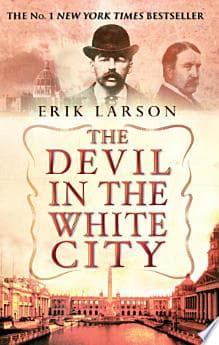- Published on
The Devil In The White City
- Authors

- Name
- Erik Larson
- @search?q=Erik Larson

Overview
"The Devil in the White City" intertwines the true tales of two men: Daniel H. Burnham, the architect behind the 1893 Chicago World's Fair, and H.H. Holmes, a serial killer who exploited the fair to find his victims. It is a narrative that captures the innovation and dark underbelly of the Gilded Age in America.
Key Themes
- Innovation and Ambition: Showcasing American ambition and innovation at the turn of the century, the 1893 Chicago World's Fair introduced many technological wonders, including the first Ferris wheel.
- Darkness Amidst Beauty: In contrast to the fair's beauty and progress, H.H. Holmes constructed a hotel to murder and dispose of his victims, exploiting the fair's draw.
- Duality of Man: The book explores the contrasting nature of human capacity for both great achievements and unspeakable evil, personified by Burnham and Holmes.
Impact and Legacy
- Architectural Marvel: Burnham's contributions had a lasting impact on American architecture and urban planning.
- Serial Murder in America: Holmes is recognized as one of America's first serial killers, highlighting the dark side of the era.
- Cultural Significance: The fair left a significant legacy in American culture, influencing technology and architecture.
Conclusion
Erik Larson's "The Devil in the White City" is a blend of history and storytelling, highlighting the human spirit's contrasts through the lens of one of America's most iconic events. It provides a detailed look at both the achievements and darkness of the Gilded Age.
